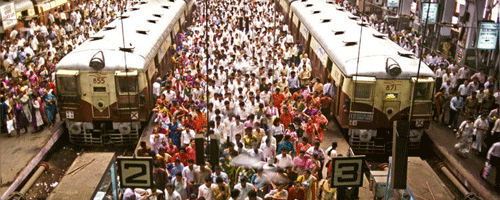
India has a large population (1.2 billion) which is great if you have a product to sell. On the downside, India has a large population. It’s a problem because how do you segment and target a specific audience for your product? Rama Bijapurkar literally wrote the book on understanding the Indian consumer. Her book is titled “We are like that only” and drills down into the behavior of the Indian consumer via the socio-economic classification (SEC) system. The SEC system helps you understand WHO your audience is, where they live and how much they earn.
If you are trying to quickly segment the Indian population that’s where the SEC classification system breaks down. One of the easiest ways to segment the Indian population is via a simple phrase – “mass vs. class.” It simply and effectively segregates the country into two buckets. I’ve always hated the term “mass vs. class” because it somehow seemed derogatory but honestly it quickly sums up India with broad strokes.
I really started to understand the power of “mass vs. class” when I was recently on vacation in Europe. The tour guide was way more interested in India then him explaining the sights and sounds of the city we were touring. The tour guide was interested in learning how the average Indian lives and what their life might be like. That’s when I realized the easiest way to describe India was via the “mass vs. class” phrase.
So who is mass and who is class? If you look at the transportation market it becomes pretty clear. Can you name the number 1 selling vehicle in India? If your brain is going into over drive and trying to run some crazy algorithms over which Indian made car is number one, you have already lost. The number 1 selling vehicle is not a car but a motorcycle. Last year, 2.5 million cars were sold in India and I would say 80% of those cars were low end cars like the Maruti Alto and Tata Indica. The number of two-wheelers sold during the same period was 11.2 million units. That gives you a grand total of 13.7 million units sold and only about 500,000 units or 3.6% for cars that cost more than 10 lakhs. 96.4% = mass and 3.6% = class.
If you live in Bombay or Delhi you might be thinking I have no idea what I’m talking about because it appears all the cars on the road are Audi’s, Benz’s and BMW’s. But in reality Bombay and Delhi live in their own little world, cut off from the rest of the real world of India. Think about this stat – Audi sold 5,511 cars last year in India whereas in China it sold over 313,000 units and in the US it sold over 117,000 vehicles.
Another example of “mass vs. class” are travel options – planes, trains and automobiles (also the title of a great movie). If you’ve been to India then you know automobile travel is not the best choice, so that really leaves planes and trains. Last year, over 61 million people travelled by planes and the good old Indian Railway system setup by the British? Over 30 million people per day. 99.5% = mass and 0.5% = class. For airline travel we are not even talking about 1% we are talking half of that.
After running these numbers I realized the “mass vs. class” phrase is similar to the stance of the Occupy Wall Street Movement whose slogan is “we are the 99%” which means the remaining 1% are the elite or class. The numbers seem to reflect the same in India.
Links to where I got my stats from: Overall market size, Audi, airline and railway.


This would explain products where there is fairly large running and or initial cost like car, air travel etc but sort of becomes fungible when the guy travelling in the local has a 20k smartphone, and wears 2000 rs shirt etc. Where we can get away with luxury ( either to show off / convenience ) without it pinching too much we do it. What say?